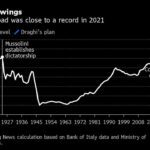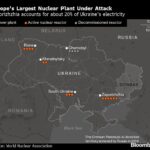
Hugo Burnand-Pool/Getty King Charles III
King Charles III‘s coronation plans have been unveiled.
Buckingham Palace revealed the date of the crowning ceremony for the new King on Tuesday, announcing that the event will take place Saturday, May 6, 2023, at Westminster Abbey in London, where British monarchs have been crowned for the last 900 years.
The date is earlier than widely speculated — many believed that King Charles would pick June 2 as a tribute to the day when Queen Elizabeth had her coronation in 1953.
Following nearly a thousand years of tradition, the service will be conducted by the Archbishop of Canterbury. The palace also confirmed that Charles, 73, will be crowned alongside his wife, Queen Camilla.
“The Coronation will reflect the monarch’s role today and look towards the future, while being rooted in longstanding traditions and pageantry,” Buckingham Palace said.
RELATED: Is King Charles Planning a Scaled-Back Coronation? How It May Differ from Queen Elizabeth’s Ceremony


Dan Kitwood/Getty Images
The update comes one month after the death of Queen Elizabeth, who died “peacefully” at age 96 on Sept. 8. Though Charles succeeded his mother as monarch immediately upon her death and was formally proclaimed King by the Accession Council on Sept. 9, his coronation did not take place immediately to respect a period of mourning as well as to allow time for preparations for the ceremony.
“Charles became King Charles the moment his mother died, but the coronation is to do with the job and being the monarch in the eyes of all the people,” royal historian Robert Lacey tells PEOPLE of the upcoming service.
The Coronation of His Majesty The King will take place on Saturday 6 May 2023 at Westminster Abbey.
The Ceremony will see His Majesty King Charles III crowned alongside The Queen Consort.
— The Royal Family (@RoyalFamily) October 11, 2022
King Charles’ coronation will be shorter and simpler than the late Queen’s ceremony of 1953, PEOPLE understands.
While 8,000 people packed into stands for Queen Elizabeth’s three-hour coronation in 1953, her son will reportedly trim the guest list to Westminster Abbey’s actual capacity of 2,000 for an hour-long ceremony.


De Agostini via Getty
Though Charles has allegedly nixed some ancient rituals to meet the modern world, Lacey expects that the new sovereign will still emphasize the religious significance of the coronation ritual, which is, at heart, a spiritual service.
“I would imagine the coronation ceremony will have much more interfaith quality to it,” the historian adds, pointing to the King’s deep interest in interfaith relations.
Though Elizabeth became Queen following her father’s death on Feb. 6, 1952, her coronation was not held until 16 months later. On June 3, 1953, Queen Elizabeth was formally crowned at Westminster Abbey in a grand ceremony that drew 27 million television viewers — understandably so, as the first coronation ever to be broadcast. Her husband, Prince Philip, was instrumental in organizing the investiture as chair of the Coronation Committee and pushed for it to be televised as a way to bring the monarchy to the masses.
RELATED: Everything to Know About King Charles III’s Accession to the Throne


Fox Photos/Getty Images Prince Philip bows to his wife, Queen Elizabeth, at her Coronation
The young Queen, then 27, traveled to the medieval church in fairytale style, and three million people packed the streets to see her go by in a golden horse-drawn carriage. She arrived at Westminster in a white duchess satin dress stitched with symbolism by Sir Norman Hartnell, who designed her wedding gown six years before.
The three-hour ceremony commenced before guests including then-Prime Minister Winston Churchill, representatives from 129 countries, members of other royal families and the future King. Charles, who was just 4 at the time, watched as his mother solemnly took the Coronation Oath, making him the first heir apparent of a Queen to attend a coronation.


Topical Press Agency/Getty Images The Queen Mother, Prince Charles and Princess Margaret
The Archbishop of Canterbury bequeathed the new Queen with St. Edward’s Crown. Other pieces of the Coronation Regalia were also used during the ritual, including the Sovereign’s Sceptre with Cross, the Sovereign’s Orb and the Coronation Spoon.
Unlike previous coronations, Queen Elizabeth was the only person crowned. Prince Philip, then 31, was not a King Consort like the Queen Mother had been a Queen Consort — instead, the proper title for the husband of a ruling monarch is “Prince Consort.” However, following the Archbishop of Canterbury, Philip was the first person to pay homage to the new monarch.
Can’t get enough of PEOPLE‘s Royals coverage? Sign up for our free Royals newsletter to get the latest updates on Kate Middleton, Meghan Markle and more!


Fox Photos/Getty Images Queen Elizabeth in her Coronation carriage
Departing Westminster Abbey, the Queen swapped the nearly 5-lb. St. Edward’s Crown for the Imperial State Crown, lighter at 3 lb. Her gilded carriage took a winding route from the Abbey to Buckingham Palace, allowing for the maximum amount of people to get a glimpse of the new monarch.
During the radio broadcast of her coronation speech, the Queen pledged her lifelong devotion to the people of the Commonwealth.
“The ceremonies you have seen today are ancient, and some of their origins are veiled in the mists of the past,” Elizabeth said. “But their spirit and their meaning shine through the ages never, perhaps, more brightly than now. I have in sincerity pledged myself to your service, as so many of you are pledged to mine. Throughout all my life and with all my heart I shall strive to be worthy of your trust.”


Universal History Archive/UIG via Getty
The exciting day ended with the traditional appearance of the royal family on the balcony of Buckingham Palace. A Royal Air Force flypast flew over the Mall, despite rain clouds.
After the sun went down, fireworks lit up the London sky over the Thames.




